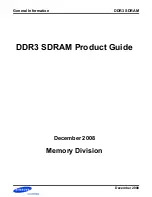
IBM High IOPS Hardware Installation Guide for ioMemory VSL 3.2.6
Shipping Considerations
Legacy Adapters:
Legacy High IOPS adapters do not support shipping installed or transported inside IBM System x servers. The
Legacy adapters must be packaged in the original box, electrostatic discharge (ESD) bag and packing materials. An
alternate packaging equivalent intended for fragile ESD sensitive electronic devices may also be used. Configured
Legacy adapters must be removed and repackaged before shipping. For more information, see the following
websites:
High IOPS adapter shipping requirements:
http://www.ibm.com/support/entry/portal/docdisplay?lndocid=migr-
Second Generation Adapters:
Shipping considerations for Second Generation High IOPS adapters are maintained at the following website:
IBM High IOPS System x server configuration information and requirements:
http://www.ibm.com/support/entry/portal/docdisplay?lndocid=SERV-IOPS
Adequate Power for IBM High IOPS Duo Adapters
Second Generation IBM High IOPS Duo Adapters require more power than the minimum 25W provided by PCIe
Gen2 slots to properly function, and therefore must receive additional power via the included power cable.
Without additional power, function will be limited with Second Generation IBM High IOPS Duo Adapters. For
more information on providing additional power via a power cable, see
Installing Power Cables on page 18
Adequate System Cooling
300 LFM
: To maximize the longevity and performance of IBM High IOPS Adapters, we recommend at least 300
Linear Feet per Minute (LFM) of airflow across the devices.
55°C Maximum
: The ambient air temperature around the device should not exceed 55°C.
Device Thermal Monitoring
: In order to protect against thermal damage, all IBM High IOPS Adapters monitor the
temperature of its onboard controller chip (This is reported by the
fio-status
command-line utility as
Internal temperature
). Newer devices, such as Second Generation IBM High IOPS Adapters, also monitor
the NAND boards to prevent overheating of the NAND flash components (reported by
fio-status
, using the
-fj
or
-fx
options, as
nand_thermal_deg_c
). If your device is throttled or shuts down due to thermal
issues, the
fio-status
utility will print a warning and indicate whether the cause was the
FPGA Junction
(controller) or the
NAND Temperature
.
l
In an attempt to contain temperatures within an optimal range, the ioMemory VSL software will start
throttling write performance once the controller temperature or NAND board reaches a set temperature.
l
If the controller or NAND board temperature continues to rise, the software will shut down the device once
the maximum operating temperature is reached.
The throttling and shutdown temperature depends on the device. Some devices detect the NAND board
temperature, while others do not.
10









































